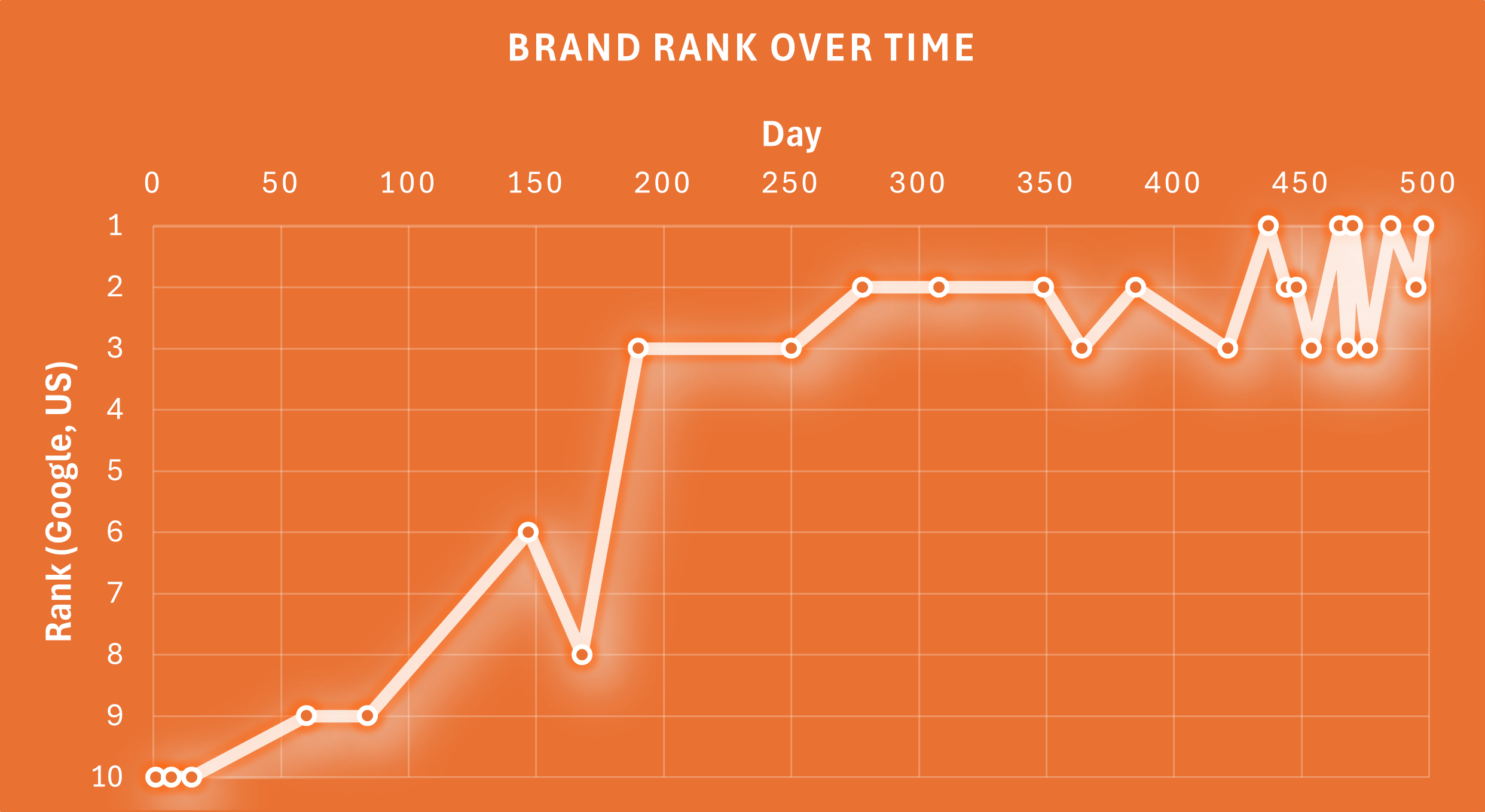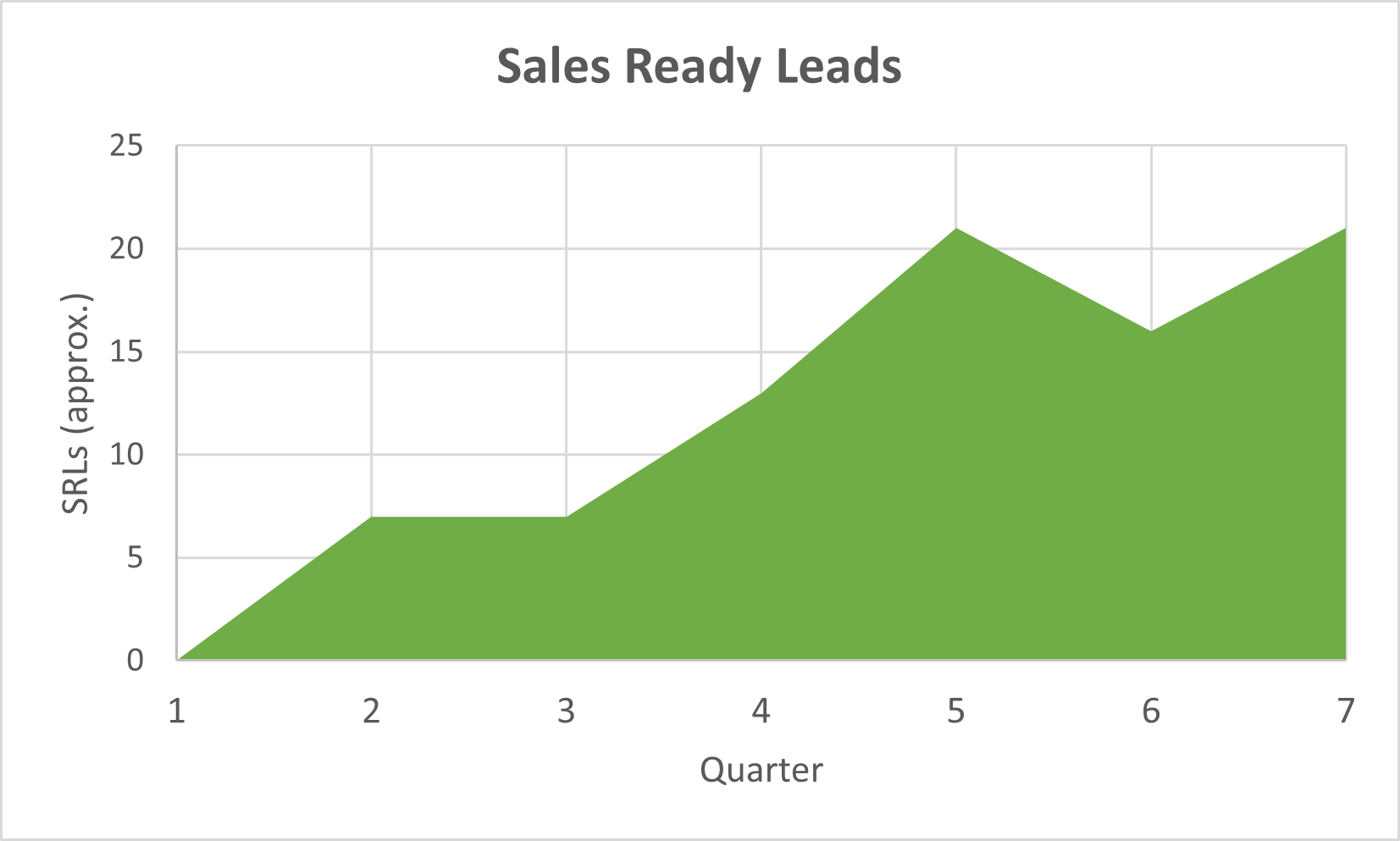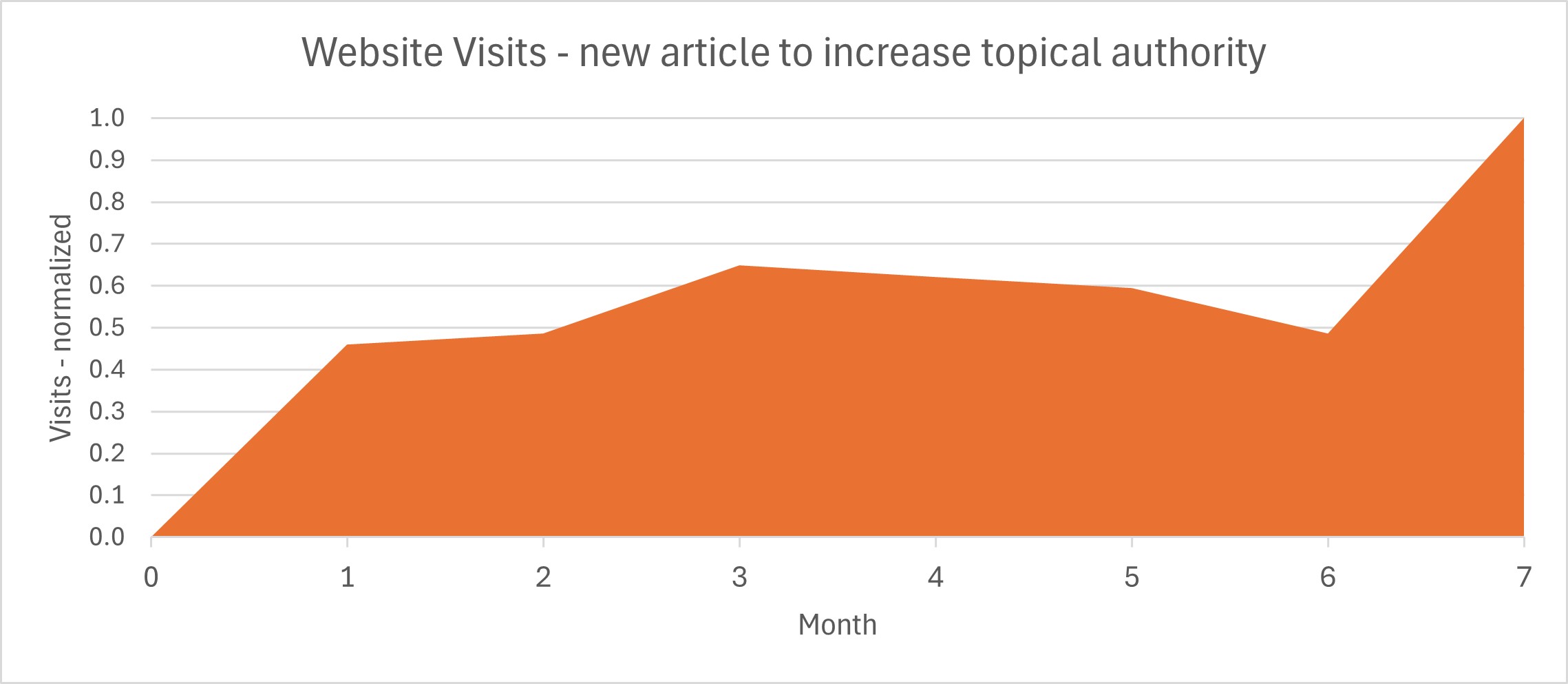Marketing strategy
for software development companies
Last updated: July 4th, 2025
Marketing custom software development / software consulting services is near the top of the pyramid when it comes to selling the invisible. Why?
Two reasons:
- You’re marketing / selling something that doesn’t exist yet (a common challenge within the realm of B2B services).
- You’re marketing / selling something that, even once it does exist, you can’t touch it / hold it. Depending on the software you’re developing, it might be more visible to a user (e.g. GUI, front end application software) or less visible (e.g. device drivers, embedded code).
So what does this mean from a marketing perspective?
It means you should take some of that energy and effort that would normally be put toward R&D and product development, and put it toward sharing your knowledge and building trust with your customer base.
How to get started with marketing custom software development services / software consulting services
Focusing on sales-ready leads
You need to decide what your single most important marketing goal is. A few options:
- Generate sales-ready leads for new business opportunities
- Support the sales process
- Improve awareness of our company
- Sell more to our existing customers
While you may be interested in all of these at some level, you need to focus. If you’re reading this article you need one of these to rise significantly above the rest in importance to stand a chance of making progress. Once you’ve got one goal handled, you can focus on another, but definitely not all at once. For this article we’re going to focus on sales-ready leads (not that some of the comments don’t also apply to other foci, we’re just going to look at this through the lens of leads since that tends to be most important to most services-based companies).
A simple marketing framework to orient and ground yourself
You need to answer 3 main questions about your potential customers in detail:
- What problem(s) am I solving?
- For whom?
- How do I engage them?
There’s a tendency to misstep in a few ways when trying to answer these questions:
- Being too internally focused / not empathetic enough. An answer like “our customers are people that need [Insert services you offer]” is not a good answer. What are the actual words your customers use to describe their problems? What triggers them to do something about it? Don’t know? You need to find out.
- Answering these questions at too high of a level to be meaningful for marketing purposes. Something like “engineers and managers at manufacturing companies” generally isn’t specific enough.
- When it comes to trying to engage potential customers, a mentality of “if we build it, they will come” is dangerous. They (usually) won’t. You have to have a decent handle on how you’re going to try to engage them. Don’t just create a bunch of content and cross your fingers. You need reasons to create content.
A high-level experimental process to follow
Here’s a high-level process to follow for the core of your marketing efforts.
- Find a reasonable niche (or two).
- Create / update content.
- Start testing.
- Assess market feedback.
- Iterate / pivot / refine.
Select marketing methods to experiment with
Assuming you run a company of less than ~100 employees,
Stop trying to be good at every marketing method out there. What you’ll achieve is mediocrity at best.
Instead, select 2 methods to experiment with for a few years. Select one primary method, and one secondary. That’s it. These can evolve over time and be swapped out for new methods every few years.
So how do you select which methods to start with?
That requires some investigation about your answers to:
- What problem(s) you’re solving
- For whom
- The size of your company
- Your longer-term business objectives
- The current state of your marketing
Based on your answer to these, you’ll select one primary and one secondary method to start experimenting with. Some methods for consideration include:
- Inbound
- Outbound
- SEO (Search Engine Optimization, i.e. organic search)
- SEM (generally paid search (e.g. Google Ads), although sometimes conflated with organic search)
- Social media (likely LinkedIn)
- Email Marketing
- Account-based engagement (also sometimes goes by account-based sales and account-based marketing)
- Trade shows
- Networking
- Partners
You may have noticed that a very common method, content marketing, is not on this list.
Why, you ask?
Because content is fundamental to essentially all marketing methods.
Why?
Because of the internet.
To be clear, content existed long before the internet (catalogues, brochures, magazines, mailings, etc). Content is pretty core to modern marketing.
However, content in and of itself is not a complete answer.
Many companies believe that it is, and this is the trap of “build it and they will come”.
Don’t fall into that trap.
See content marketing for engineering companies for more on this.
(Most likely) Focus on digital marketing
Why? Because you can do what you do almost anywhere, which means your audience is pretty geographically dispersed. That doesn’t mean you’ll be marketing worldwide, but for example you may be marketing across the entire US, or across several states within the US.
This will likely mean at least one of these methods below will be involved as your primary or secondary method to start experimenting with:
- inbound marketing (check out this inbound readiness calculator)
- search marketing (organic search and/or paid search)
- account-based marketing.
Get narrow – what problems are you best at solving?
When you’re marketing custom software / software development services / software consulting services, your market is likely spanning several states, your competition is also spanning at least several states, so you’re bound to bump into other players as a generic software development company.
One of the best ways to separate yourself from your competitors is to reduce the amount of overlap between you and them by focusing your business on a narrower problem set. You can narrow your focus in multiple dimensions relating to the market and the customers you provide services to.
For more on this topic, see why you need a niche, and what to do about it.
Creating a marketing plan for your software development company
When it comes to creating a detailed marketing plan, you can get off track really easy. It can do a lot of damage and give you a false sense of security. Why? Because it encourages you to focus on activities, and if you tend toward being rational and analytical, it can make you think that performing these activities will magically bring you new business. It won’t.
So what should you do? You want to mentally tear up this concept of a “plan”. I suggest you don’t even use the word plan when it comes to marketing. You want to experiment, explore, analyze, and iterate. It’s an un-plan, or a niche experiment framework. If you want to learn more about that, see The problem with marketing plans – and what to do instead.
Work on your empathy skills
Why?
Because (almost) no one cares about your company or what it does.
They care about solving their problem.
They aren’t looking for a digital brochure telling them how many years you’ve been in business or how you opened a new office. They want to know if you can help them, and they want to know how.
Your job is to give them the best user experience (UX) possible.
Being seriously empathetic is one of the harder aspects of marketing to get right, but it’s also one of the most important.
So how do you improve your empathy? Well, there’s several nuances, but for starters put a lot of work into:
- Ask more questions.
- Learn how to actively listen.
- Put yourself in the shoes of the people you’re trying to help.
Teach these things to your team over time. Infuse these things into your processes.
Improve data gathering for analysis
Technical people tend to understand the importance of gathering data to find patterns better than most, yet many tech companies get lazy about consistently collecting sales and marketing data.
You want to get a handle on all sorts of things about your customers, including things like:
- How they found out about you
- What their journey looked like
- Where they’re located
- Industry
- Company size
- Roles
- Affinity groups
- Niche
- Motivation for reaching out
You need this data as part of your feedback loop to help decide how to change your behavior in the future. Check out What data to capture in your CRM – and why, for more.
Caution flag: there’s a balance to this. On one side is your gut / instincts / sense of the world. On the other is data. Knowing that sometimes you should rely more heavily on your gut and other times more heavily on data is key to surviving and thriving as a business.
Get to know your customer better
Are your main customers / buyers / influencers technical or not? Maybe some are and some aren’t. Maybe some used to be, but aren’t so much anymore. You need to help these groups differently.
Go through your existing customer data. Pick your top 20 or so favorites for a particular application area.
What do they care about? Get specific.
Don’t know? Then start talking to them. Don’t stop at things like faster/better/cheaper. Dig in.
Do more of them care about technical specifics or are more of them business-minded? Whichever dominates, start there.
Create new content for what they care most about.
If they’re technically-oriented, the most important thing to remember is: No. Fluff. Allowed.
Stop putting energy into less-useful marketing activities
Many companies put a lot of energy into less useful activities. This isn’t sustainable, and there’s a good chance you’ll be left behind eventually.
Some indicators that your company is putting energy into the wrong activities:
- A lot of social media posts are company-centric / fall into the “blabbing” category (e.g. a new office, some minor award you won that very few people care about).
- Looking for potential customers that don’t have a need (there’s a caveat here with some outbound methods like account-based engagement).
- Marketing and sales people that don’t work together as a team.
- Content that’s focused on your company as opposed to the problems you solve or your customer.
- Trying to become a household brand name.
- Thinking that your customer base is “people that need [insert solution we provide]”. This is related to the “build it and they will come” philosophy.
See Why your marketing machine is broken for more on these indicators.
If your company is a little further along in your marketing journey, you might have resolved most of the issues above, but you may still be getting tripped up by the following gotchas:
- Focusing on trying to play games over doing the hard work.
- Consistently pushing off content creation.
- Focusing on quantity of articles created over quality.
- Outsourcing the creation of thought-leadership content.
- Letting the perfect be the enemy of the good enough.
- Watching the water around you get redder and redder, and not swimming in a different direction.
- Putting all your eggs in any one basket / channel.
Check out Marketing machine gotchas and tips for more on these.
Marketing custom software services – case studies
Interested in seeing some examples of marketing custom software services? These case studies are for companies where an aspect of their business is custom software development.
Next Steps
That’s a good toe to dip in the water, and a lot to digest in one sitting. If you’re looking for help marketing your software development / software consulting services, feel free to reach out for a chat.
Quick poll – Vote to see how your peers voted
If you’re in learning mode, check out these articles:
- How to sell software services
- How to get clients for a software development company
- The problem with marketing plans, and what to do instead
- Inbound marketing for software development companies
- Why you need a niche for your engineering / tech company
- SEO for Engineering
- Pros and cons of SEO
- Pros and cons of paid search
- Pros and cons of inbound marketing
- Pros and cons of content marketing
- Inbound marketing – the risk of waiting to get started
- How to generate leads for software development projects
- Niche selection obstacles – poll results and thoughts








